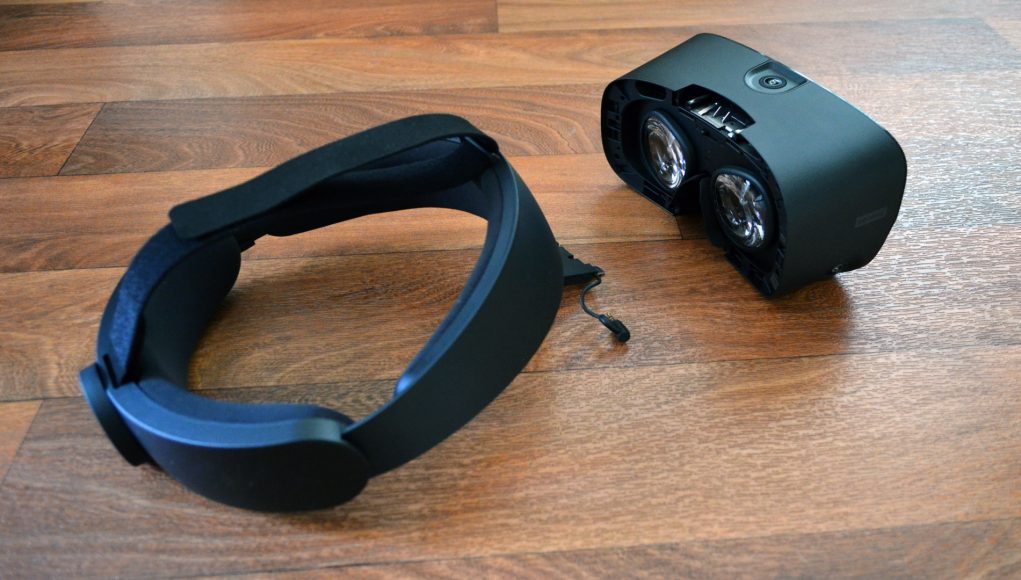With Rift S right around the corner, a bunch of people are about to find that the headset’s on-board audio is lacking in quality and that the face gasket will make it difficult for some to get the lenses into the ideal position for maximum clarity and field of view. Luckily there’s a path forward—the Rift S design is relatively modular, allowing both the headstrap and the face gasket to be removed, meaning that Oculus could (and should) offer accessories to improve the experience.
Rift S isn’t a bad headset by any means, but compared to the original Rift its upgrades come with a handful of downgrades. For early adopters who bought into Oculus’ ecosystem (and want to stay in it), this presents a conundrum—are the upsides of Rift S worth the downsides over the original Rift? Right now it’s not really a clear cut answer, and different people will likely come to different conclusions.
But, Oculus could (and I think should) tilt the scales toward the Rift S by addressing two three with optional accessories: audio and ergonomics. Luckily, the Rift S’ somewhat modular design should make this easy. And there’s already precedent in the VR market for this sort of thing; in 2017 HTC release the Vive Deluxe Audio Strap which upgraded the headset’s soft strap to a rigid strap with headphones. Though it cost $100, many consider it an essential accessory—on Amazon, the Deluxe Audio Strap is better rated than the Vive headset itself!
Rift S Audio
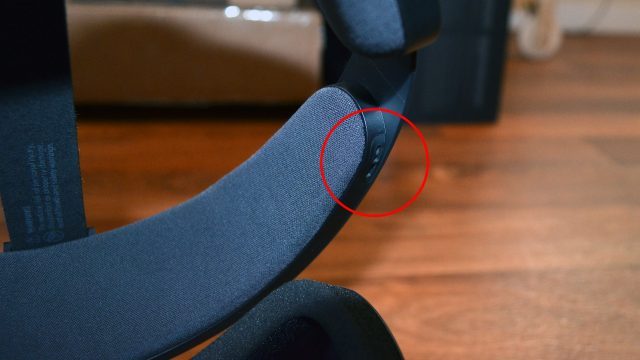
The Rift S includes integrated audio, but instead of the on-ear headphones of the original Rift, it uses small speakers built into the headstrap. The idea is that the headphones won’t get in the way when putting on the headset or need adjustment, and ostensibly it’s a more simple design with fewer parts. The problem is that the audio quality on Rift S is not just worse than the original Rift, it’s pretty weak overall.
When using the Rift S I always have it set to 100% volume, and even then I’ve sometimes wished it would go louder. It’s not just volume; the small speakers just don’t have a very good frequency range, and quite lacking in bass. Oculus’ other headset, Quest, uses a similar hidden audio solution, but even it seems to have better range and more bass.
There’s also the matter of positional audio accuracy. On the Rift S, the sound is output from somewhere above your ear, which naturally biases all positional information in that direction (because that’s the direction of greatest amplitude). It’s not that you can’t get a sense of positional audio, it just isn’t as clear as the Rift’s on-ear headphones which direct sound more evenly into your ear.
Yes, Rift S has a 3.5mm headphone jack on the side which anyone could plug their own headphones into, but the VR market has clearly shown over the last three years that very few people want to put up with the annoyance of putting another thing on their head after the headset, let alone another cable dangling around their arms. Even if you were willing to, finding headphones that would comfortably fit around the Rift S headstrap won’t be easy.
So, how could Oculus fix this? There’s two options. The company could release on-ear headphones which snap onto the headband, similar to the Mantis headphones for PSVR [Amazon]. These would plug into the 3.5mm jack on the side with a short cable that doesn’t get in the way.
A more elegant solution would be to offer a Deluxe Audio Strap, which would be a complete replacement for the headstrap with on-ear headphones built right in, just like HTC did with the Vive Deluxe Audio Strap.
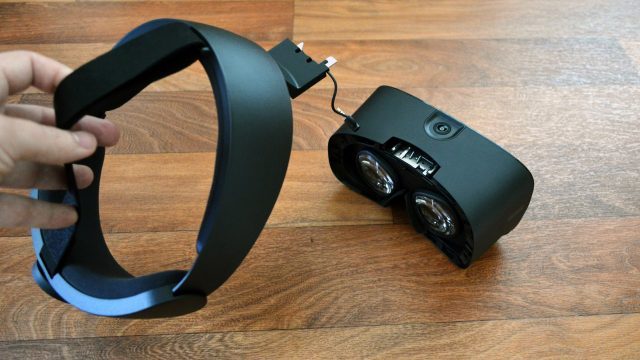
Compared to the original Rift, which had a permanently affixed headstrap, this would be trivial for the Rift S because its headstrap is completely removable from the visor by flipping a little switch and the pulling the headstrap off.
Rift S Fit and Visuals
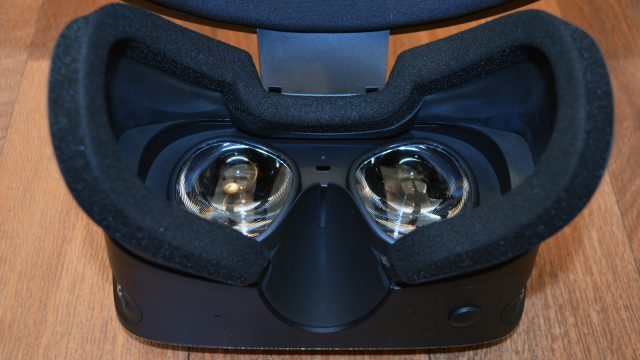
One simple issue with the Rift S limits the visual experience for me more than it should: the face gasket. That’s the piece of the headset that rests between the visor and your face. While I never felt like I needed to get my eyes closer to the original Rift’s lenses, it’s clear when wearing the Rift S that I can get a notably larger field of view and a larger sweet spot by moving my eyes closer to the lenses.
And while the Rift S has a lens-to-eye distance adjustment, it moves the entire visor (not just the lenses), and the rigid face gasket means I have to uncomfortably press it against my face to achieve optimal visual quality. PSVR on the other hand has a very similar lens-to-eye adjustment that moves the whole visor, but the face gasket is soft and flexible, so it doesn’t prevent you from putting the lenses in their ideal position.
Even though it means exposing my peripheral view to the outside world, I nearly prefer to use the Rift S with the face gasket removed entirely because of the benefits in comfort and clarity.
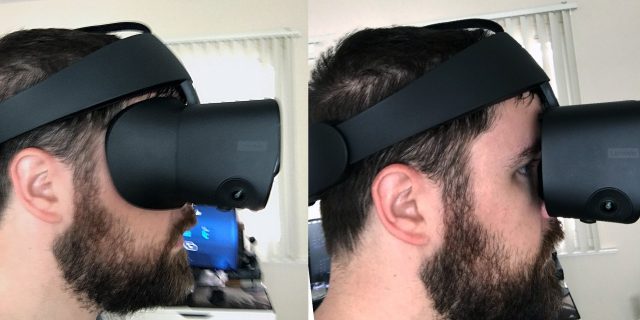
So the fix is pretty clear—Oculus could offer a soft face gasket that flexes to allow a wider range of adjustments while maintaining comfort, or they could release one or more face gaskets of different sizes to allow more people to get their eyes into the sweet spot.
I’m fully aware that this particular issue is dependent on the shape of each person’s face—in particular, how deep their eyes are compared to the foremost part of their cheeks and forehead. Granted, I don’t think my eyes are particularly sunken, and I don’t run into this particular issue with other headsets.
– – — – –
For general consumers, maybe these things aren’t too important, but there’s no denying that the existing PC VR market is composed very heavily of early adopter and enthusiast types. These are people who spend money on high-end gaming PCs so that they can have a high-end gaming experience, the kind of people that are more likely than general consumers to be willing to spend to improve their VR experience if upgrades are available.
It’s fortunate that Rift S happens to be designed in a modular way that could improve some of its downsides with optional accessories. If Oculus doesn’t step up to the plate, third-party accessory makers could have a nice new opportunity on their hands.

